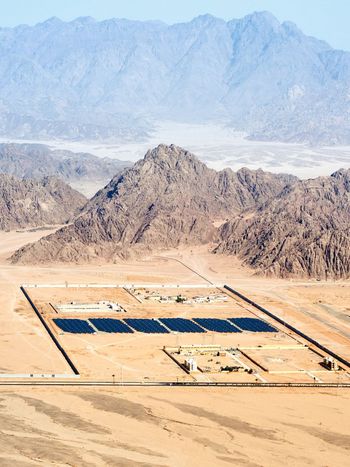Challenges in Japan's Power Systems to Achieve Carbon Neutral and Resilient Communities
Many countries are undergoing an energy transition to achieve carbon neutrality (CN) around 2050, but while fossil fuel consumption needs to be reduced, a global energy crisis is emerging due to the tightening supply and demand and rising fossil fuel prices as geopolitical risks emerge. This crisis is inextricably linked to the energy transition, and in the medium to long term it will be necessary to balance CN and stable energy supply. This article describes the current electricity supply and demand situation in Japan and outlines the prospects for a new electricity grid that balances CN with stable supply and regional resilience, learning from the lessons of the current crisis.

By Hiroshi Okamoto, Chief Technology Officer, TEPCO Power Grid
Introduction
Former Prime Minister Yoshihide Suga's announcement in October 2020 that Japan would achieve carbon neutrality (CN) by 2050 meant that Japan would join the framework of international cooperation and competition to achieve CN as a climate change mitigation measure, which has had a significant impact on Japanese industry.
The government has already taken measures such as the massive introduction of renewable energy, and solar power generation is now being introduced on the third largest scale in the world after the US and China, which have vast land areas. On the other hand, concerns about the stability of electricity supply have continued to arise in recent years, with a nationwide electricity shortage in January 2021 due to a shortage of LNG imports, and the government issuing its first electricity supply and demand crunch warning in March 2022.
The global energy crisis has been triggered by geopolitical risks such as Russia's invasion of Ukraine, while not only Japan but also other countries are working on CN, and there is a growing global recognition that the energy transition towards the realization of CN is irreversible. At the same time, it has already become clear that it will not be easy to achieve.
This article first describes the recent electricity supply and demand situation in Japan, and then explains what is needed for CN and a stable energy supply. It also adds the perspective of ensuring the resilience of local communities and explains the challenges for the electricity system to achieve this, the need for early societal implementation of the new framework for industrial collaboration and fusion proposed by the authors as "Utility 3.0"[1]. The TEPCO group's efforts to achieve this are discussed.
Recent electricity supply and demand situation in Japan
Electricity Supply and Demand Crisis in March 2022[2]
As a result of the Fukushima earthquake on March 16, 2022, 6,478 MW of power generation facilities in eastern Japan were shut down, and the emergency protection system (UFR: Under Frequency Relay), which detected a sudden drop in frequency due to an imbalance between supply and demand immediately after the earthquake, was activated in TEPCO area, including Tokyo. A total of 2.46 GW and approximately 2.1 million customers lost power. The power outage was restored in 149 minutes because the earthquake occurred late at night and there was excess supply and demand capacity for the following day. However, as many power generation facilities were unable to operate due to damage caused by the earthquake, the Company requested the postponement of regular inspections of power plants in preparation for increased demand the following week and secured maximum supply capacity, but the unseasonal snow and cold weather that hit eastern Japan caused a supply-demand shortfall, and on March 22, the government issued its first supply-demand shortfall warning. On March 22, the Government of Japan issued its first supply-demand crunch warning.
Figure 1 shows the power supply and demand situation in the TEPCO area on March 22, 2022. Supply-capacity measures were implemented, including requests to increase the generation output of in-house power plants, full use of pumped-storage hydroelectric power plants that had pumped up water for power generation the day before, and power supply from western Japan, but as it was expected that the pumped-storage plants would fail and blackouts would occur on their own, the Minister of Economy, Trade and Industry twice called for power conservation.
As a result, the TSO was able to maintain stable supply and demand without blackouts, but it showed the importance of consumer cooperation, including energy storage such as pumped storage, and demand response in power systems where solar power has been massively deployed, as is currently the case. It also highlighted the lack of firm supply capacity, such as nuclear and thermal generation, to avoid the need for painful conservation.
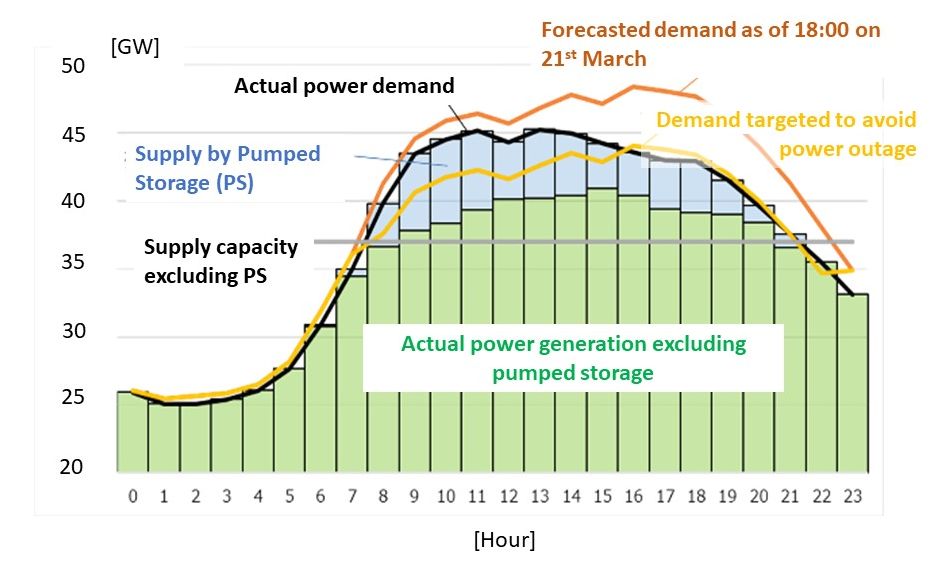
Figure 1 - Electricity supply and demand on 22 March 2022 [2]
On the other hand, the problem was that the dissemination of information on supply and demand shortages by power companies and the government was too slow, so since then, measures have been considered in cooperation with the Meteorological Agency, such as issuing supply and demand shortage information two days in advance and posting supply and demand assumptions on the website with daily updates for the next three days, and careful information dissemination by the government has been implemented since the summer of 2022.
Electricity Supply and Demand with Recurring Surpluses and Shortages
Figure 2 shows typical supply and demand curves for January and May 2022 (during the Golden Week). In the TEPCO area, electricity consumption peaks in the summer, but demand is high throughout the day in the winter for heating purposes, due to a combination of factors such as the shutdown of fossil power generation, which has lost its competitiveness in the electricity market, the low availability of nuclear power generation and other firm supply capacity, and bad weather on high-demand days in the winter when little solar power is expected. Currently, the stability of supply and demand is barely maintained by relying on the operation of pumped storage power plants, and supply and demand are more severe than in summer.
On the other hand, during Golden Week, special holidays from April 29 to May 5, when there is little demand for heating and cooling and electricity consumption is low, there is a surplus of electricity in the area due to solar PV, which has already been installed about 17 GW, and it may be necessary to operate PV output control from 2023.
As renewable energy continues to be introduced in the CN and thermal power generation is reduced, electricity supply and demand will face the structural challenge of a surplus in spring and fall and a recurring shortage in summer and winter when demand for heating and cooling is high. There are high hopes for energy storage such as batteries, but as Figure 2 shows, it is unfortunately not realistic to continue to store surplus electricity in the spring for several months and use it in the summer and winter. The way forward is discussed in Section 4 below.

Figure 2 - Electricity supply and demand in winter and Golden Week 2022
Path to Carbon Neutrality [1]
The study of measures to achieve CN with net-zero CO2 emissions related to energy use requires an overview of the entire energy flow from primary energy to final energy consumption. The energy flow for achieving CN is shown in Figure 3.
As shown on the left side of Figure 3, the final energy consumption stage includes electricity demand and non-electricity demand (fossil fuel consumption), with electricity demand accounting for just under 30% of the total. First, this total final energy consumption needs to be significantly reduced by improving the insulation of buildings and by smart electrification of demand (e.g., by replacing internal combustion engines with motors, and by replacing direct combustion with heat transfer by heat pumps to increase efficiency). For example, for high temperature heat demand, which is difficult to electrify, the use of hydrogen (or ammonia as a carrier) should be considered.
The electricity or hydrogen used in the final energy consumption phase must then be generated from decarbonized primary energy sources. Candidates include renewable energy sources, including biomass fuels, nuclear power, and thermal power with CO2 capture and storage (CCS) technology.
The CO2 that is not generated in this energy stream must be sequestered using technologies such as Direct Air Carbon Capture and Storage (DACCS), which captures CO2 directly from the atmosphere.
In other words, the realization of CN requires a combination of electrification or hydrogenation of final energy consumption and non-fossilized primary energy sources.
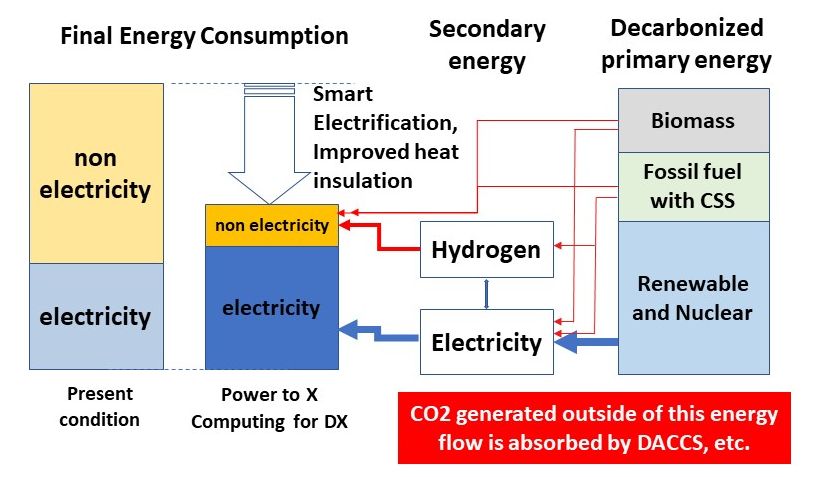
Figure 3 - Energy flow for realizing carbon neutrality
Power System Challenges and Implementation of Utility 3.0
Challenges of Mass Deployment of Renewables
As shown in Figure 3, decarbonized primary energy sources are needed to replace fossil fuels to achieve CN. The government of Japan is pursuing a policy of mass deployment of renewable energy sources, and the amount of PV installed in Japan is about 65 GW, the third largest in the world after the U.S. and China, and the first in the world when compared per land area.
However, several challenges to the further expansion of renewable energy have become apparent. One of the factors contributing to the recent supply-demand squeeze mentioned in the previous section is that the preferential introduction of renewables has led to thermal power plants being taken out of the market. Thus, the amount of electricity generated by renewable energy sources reduces the availability of thermal power plants, which worsens the profitability of the power plants.
On the other hand, as mentioned in the previous section, PV can hardly generate electricity on high demand days during cloudy or snowy winter days, so basically the installed capacity (MW) of non-renewable fixed supply capacity, such as thermal power, needs to be largely maintained. To this end, the government had already developed a capacity market to trade supply capacity for delivery from 2024, but the reality is that the country will have to rely on measures such as a public tender for additional supply capacity until 2023.
The decline in energy (MWh) produced by thermal power generation has also weakened the supply chain for oil and other fossil fuels. The exit of oil-fired power generation has led to an increased focus on LNG, but supply chain management is not easy because LNG tank storage is small, and it takes several weeks to import tankers from LNG-producing countries. As a result, the supply-demand structure is such that supply capacity shortages are likely to materialize if there are problems with LNG supply or if electricity demand increases rapidly, as was the case in the winter of 2021. In addition, fuel procurement risks are currently increasing due to Russia's invasion of Ukraine, and a system is in place for Japan Organization for Metals and Energy Security (JOGMEC) to procure fuel on behalf of the private sector in an emergency.

Balancing CN with Stable Supply and Local Resilience
Thus, the energy transition to CN is not easy, but in addition to compatibility with energy security, it is also important to consider resilience from the perspective of the local community.
Recently, due to climate change and other factors, the impact of typhoons and other natural disasters has increased, often resulting in power outages due to damage to transmission and distribution facilities.
As communities are electrified to achieve CN, the damage in the event of a power outage will also increase. It is important not only to reduce CO2 emissions to mitigate climate change, but also to help local communities adapt to climate change-related disasters. This requires not only large-scale power systems, but also maximum utilization of decentralized energy resources in the region.
Based on the experience of Japan and other countries, there are four important things that need to be done to maximize the use of renewable energy and achieve a CN and resilient society.
First, it is necessary to improve the efficiency of energy consumption to reduce primary energy consumption while increasing productivity. Specifically, it is necessary to
- couple sectors through smart electrification of transport and heat to improve the energy efficiency of society and industry,
- adding value to production and significantly increasing productivity in combination with Digital Transformation (DX),
- the use of green molecules (e.g., hydrogen) generated from decarbonized electricity for consumption that requires high temperature and high-density heat.
Second, it is important to make effective use of solar power generation, battery storage, electric vehicles, heat pump water heaters, etc. that exist in the community as distributed energy resources. These distributed resources should be shared by the community not only in normal times, but also in times of disaster.
On the other hand, since there is an absolute limit to the population that can be served by distributed energy resources in densely populated Japan, coexistence of large-scale power systems is necessary. Therefore, a mechanism for coordinating large-scale power systems and distributed energy systems based on local production for local consumption is important.
Third, it is necessary to ensure a diversity of primary energy sources, including not only renewable energy sources but also nuclear power and thermal power using CCS technology, and to combine these sources to achieve both CN and energy security.
In island countries such as Japan, which are densely populated and surrounded by the sea, it is also important to consider floating offshore platforms, including offshore wind turbines, while working in harmony with the fishing industry and other sectors.
Finally, it is important to promote DX and Green Transformation (GX) simultaneously. This is discussed in more detail in Section 5.
The Need to Implement Utility 3.0
The author refers to the vertically integrated electricity industry created by Thomas Edison as Utility 1.0, the current electricity industry with deregulation and unbundling as Utility 2.0, and the electricity industry with decentralization, democratization, decarbonization, depopulation, and digitalization as Utility 3.0 [1]. In Utility 3.0, there is a simultaneous technological shift from centralized to decentralized, decarbonization and productivity gains, and a new value system. and assumes the emergence of a diverse set of utility players under a new set of values.
When considering the implementation of Utility 3.0, it is important to share its goals. Customers in the region are not only consumers of various goods and services, but also workers who produce those goods and services. When considering the sustainability of the region, not only secondary industries such as manufacturing, which are highly competitive internationally, but also primary and tertiary industries such as agriculture and services are important, and the goal should be to dramatically increase the productivity of these industries through smart electrification and digital technology.
Figure 4 shows one of the current proposed implementations of Utility 3.0. In the top tier, there is a group of grid-edge devices that provide the user experience (UX) for customers and workers to realize well-being, and distributed energy resources (DERs) to power these devices, as well as the first level of energy management at customer premises, such as in customers' homes, stores, offices, factories, and farms.
In the lower third, an expanded national trading market already exists. We recommend linking the first and third tiers by placing a distributed energy trading market for local energy management in the second tier in the middle. This would enable the management of congestion in distribution and local grids and the optimal coordination of decentralized systems and large power systems. Furthermore, nodal price signals produced by coupling TSO and DSO markets will enable the innovative usage of the flexibility and energy for the grid edge devices.
To realize this, it is necessary to agree on a reference model that facilitates the loading of services and applications and a mechanism for interconnecting them, a mechanism that allows customers to freely combine them, and cybersecurity and privacy.
In addition to commercial and industrial applications, smart energy hubs to control appliances, batteries, etc. in the home, and technologies to optimize the charging and discharging of large numbers of electric vehicles will become increasingly important.
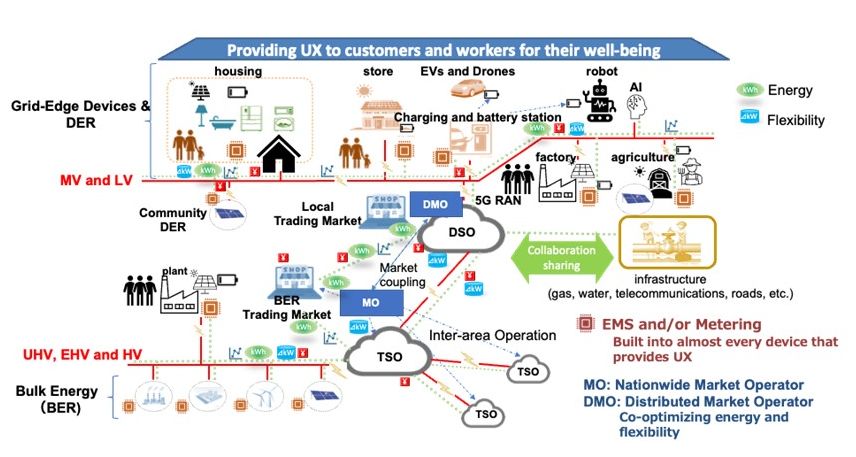
Figure 4 - Proposed implementation of Utility 3.0
Towards the realization of Society 5.0.
Japan's public and private sectors are working together to realize Society 5.0, in which real and cyberspace will be highly integrated. This will further deepen the interdependence between energy-dependent information technology and energy, which is increasingly dependent on secure information technology to handle many devices as it becomes more decentralized.
Interestingly, cutting-edge medical and life science research in Japan has revealed the close relationship between the nervous and vascular systems, known as "neuro-vascular wiring". As the two most important networks in the human body, the nervous and vascular systems are responsible for the transmission and processing of information and energy (oxygen and carbon dioxide circulation), respectively, and as shown in Figure 5, they are clearly formed in close cooperation and influence each other through their close contact. It is increasingly understood that by interacting with each other, they form the basic infrastructure that underpins advanced biological functions such as those of humans [3].

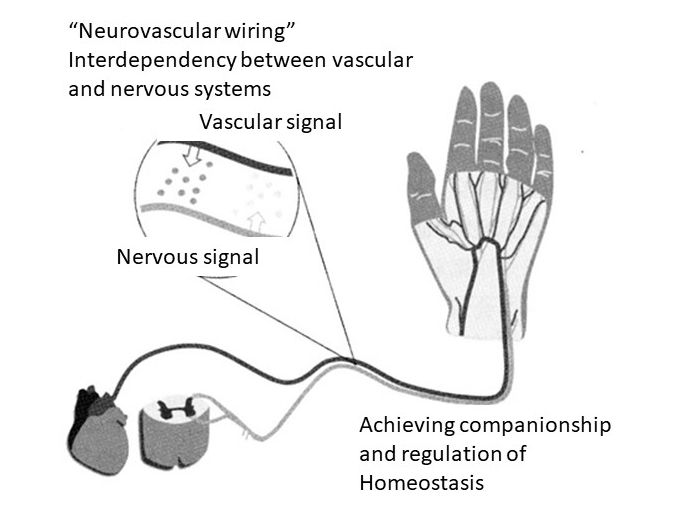
Figure 3 - Neuro-vascular wiring [3]
Analogous to this fact, mutual adherence in both the formation and operation of the two networks will be important in the energy transmission and management and information transmission and processing of Society 5.0, where the cyber and real spaces are highly integrated.
In the future, when the volume of information processing by AI expands rapidly due to the progress of smart electrification on the demand side and automation by digital technologies such as autonomous driving, optoelectronic convergence technologies and other technologies will be required to realize low power, low latency, high quality, and large capacity information transmission and processing. In Japan, development is already underway as part of the "Innovative Optical and Wireless Network (IOWN)" concept [4] promoted by the NTT Group. In other words, we need to consider the optimal alignment and utilization of "photons", "electrons", and "green molecules" to achieve GX and DX.
In analogy to the power system, where wide-arenization and decentralization are progressing simultaneously, the information processing systems that support cyberspace will also need to optimally combine hyperscale data centers connected to wide-area networks and edge data centers (local production for local consumption of low-latency information) located in regions, depending on the application.
Dynamic load shifting between data centers, considering grid congestion and local production/consumption of renewable energy in the region, will become a new research challenge that spans energy and information communications. It is hoped that the elucidation of neural and vascular wiring, which is in the interdisciplinary field, will be advanced to address this issue. TEPCO Power Grid has already begun to address this issue by establishing Agile Energy X, an in-house venture for distributed computing with local production and local consumption of renewable energy [5].
Conclusion
This article has introduced the current electricity supply and demand situation and explained the challenges of energy transition to carbon neutrality in Japan.
A combination of diverse large-scale non-fossil sources (nuclear, large hydro, offshore wind, CCS thermal, etc.), diverse distributed energy resources (solar, biomass, small hydro, etc.), smart electrification and digital technologies, including the introduction of distributed energy markets and social implementation of Utility 3.0 which enables integrated infrastructure for information, mobility and energy are desired. TEPCO Power Grid aims to realize this by around 2030.
Japan is often seen as lagging far behind the U.S., European countries, China, and other countries in DX and AI, but Prof. Kazuto Ataka of Keio University points out that there is an upstream and a downstream for the AI-ization of industries, and that Japan has strengths in the downstream, namely a strong obsession with manufacturing and realism that provides actual solutions to individual problems not found in other countries [6]. He advocates combining Japan's strength and increasingly democratized AI technology with global cooperation. This means the revival of "Wakon Yosai" (Japanese spirit with Western learning), which was seen in Japan's Meiji period at the beginning of the 20th century.
By combining Utility 3.0, the IOWN concept, and the strength of Japanese industries with global partnership, there is an opportunity to solve problems in local communities by dramatically increasing productivity in all industries in Japan, where the working-age population is declining, and the well-being of local communities is also improving. The author expects that a revitalized Japan will be seen that overcomes the crises of population decline and contributes to the global energy transition.
Thumbnail & banner credit: Fabrizio Chiagano on Unsplash
- [1] Hiroshi Okamoto, " Utility 3.0: Japan’s Utility of the Future", ELECTRA N°311 - August 2020
- [2] Toshio Kataoka et al., "Frequency Situation at 2022 Fukushima Earthquake and Actions Taken for Supply Shortage Thereafter", Large Disturbance Workshop, CIGRE Paris Session 2022
- [3] Yoshiko Takahashi, 'Regulatory mechanisms of neurovascular wiring', Vascular Medicine, Vol. 14, No. 3, Sep 2013. (In Japanese)
- [4] IOWN Global Forum Homepage: iowngf.org
- [5] TEPCO Press Release, ' Formation of Agile Energy X, Inc., a New Company on a Mission to Accelerate the Introduction of Renewable Energy By flexibly creating power demand, Agile Energy X will create digital and environmental value while mitigating grid congestion.', www.tepco.co.jp/en/pg/about/newsroom/press/archives/2022/20220921_01.html
- [6] Kazuto Ataka, 'Shin Nihon, Japan's Rebirth and Human Resource Development in the AI x Data Era', News Picks Publishing, February 2020. (In Japanese)
